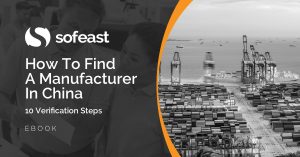I wrote recently about ISO 9001:
- What are the standard and the certification process
- 10 ways it can get poorly implemented in a factory
To summarize my view on this topic:
- It is a good standard, keeping in mind that it was designed to apply to all sorts of organizations
- Many companies did not implement it the right way, as they took shortcuts and they were only interested in the ‘marketing impact’ of a certification
- The real culprit is the way registrar bodies audit and certify companies (and it doesn’t mean ISO 9001 is ‘useless’ or ‘a joke’)
- As more and more companies are certified to this standard, it has in many cases become an “entry to play” and purchasers are often looking for something more advanced (e.g. ISO 13485, IATF 16949, and so on).
I wanted to touch on the benefits of ISO 9001 for a manufacturing organization.
The obvious plus, in my mind, is that it forms a basic framework for managing the business as a system. I explained how all the elements interact in this video:
The most common reasons for factories to implement a Quality Management System compliant with this standard are as follows:
- It sets an objective for the company (especially the R&D, purchasing, production, and quality departments), with a clear timeline. It brings operational managers working together on upgrading the company’s system and processes.
- Constant pressure from the registrar pushes those same operational managers to keep the system alive. It makes backsliding less likely.
- It avoids the need to be audited by all sorts of customers. Not because auditing is useless, but because some of these customers will recognize that ‘this factory has a system in place, no need to spend time on checking them up’.
- The marketing and sales functions are happy to use the registration as an argument showing how serious their company is.
The technical committee behind ISO 9001 also suggested the following benefits:
Assess the overall context of your organization to define who is affected by your work and what they expect from you. This will enable you to clearly state your objectives and identify new business opportunities.
Put your customers first, making sure you consistently meet their needs and enhance their satisfaction. This can lead to repeat custom, new clients and increased business for your organization.
This is a big one for some manufacturers — forcing them to look at what their customers want (e.g. cost, quality, delivery, service) and keep tracking their performance on these metrics.
Work in a more efficient way as all your processes will be aligned and understood by everyone in the business ororganization. This increases productivity and efficiency, bringing internal costs down.
Map the sequence & interaction of processes, think of how to avoid serious issues and how to streamline the workflow. Standardize the way routine and especially sensitive processes are performed. Of course, good advice.
Finally, ISO 9001 gives people a common language. Working on improvements with someone who was trained to, and worked on the basis of, this standard is generally easier.
—
What do you think? Any other benefits you have experienced? Please tell me by leaving a comment.
Disclaimer
We are not lawyers. What we wrote above is based only on our understanding of the regulatory requirements. QualityInspection.org does not present this information as a basis for you to make decisions, and we do not accept any liability if you do so.
Are you wondering how to find a manufacturer in China who is well-suited to your needs and can also deliver on their promises?
Sofeast has developed 10 verification steps to help you find the right manufacturer. They’re shared in this FREE eBook: “How To Find A Manufacturer In China: 10 Verification Steps.”
It covers:
- Background checks
- Manufacturing capabilities
- Quality system auditing
- Engineering resources
- Pricing, negotiation, & contracts
- …and much, much more
Just hit the button below to get your copy:

